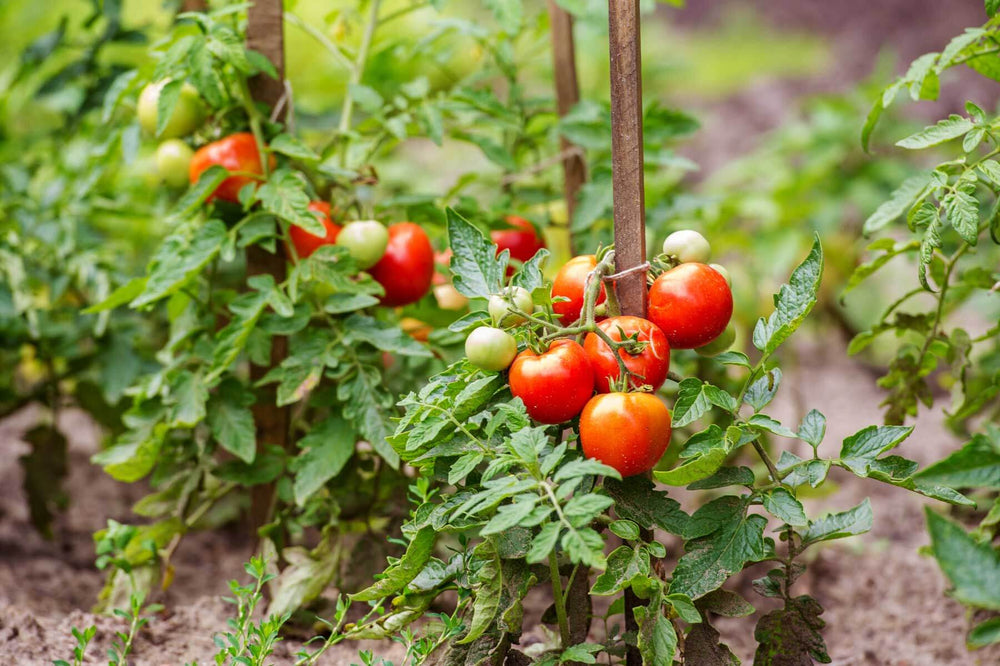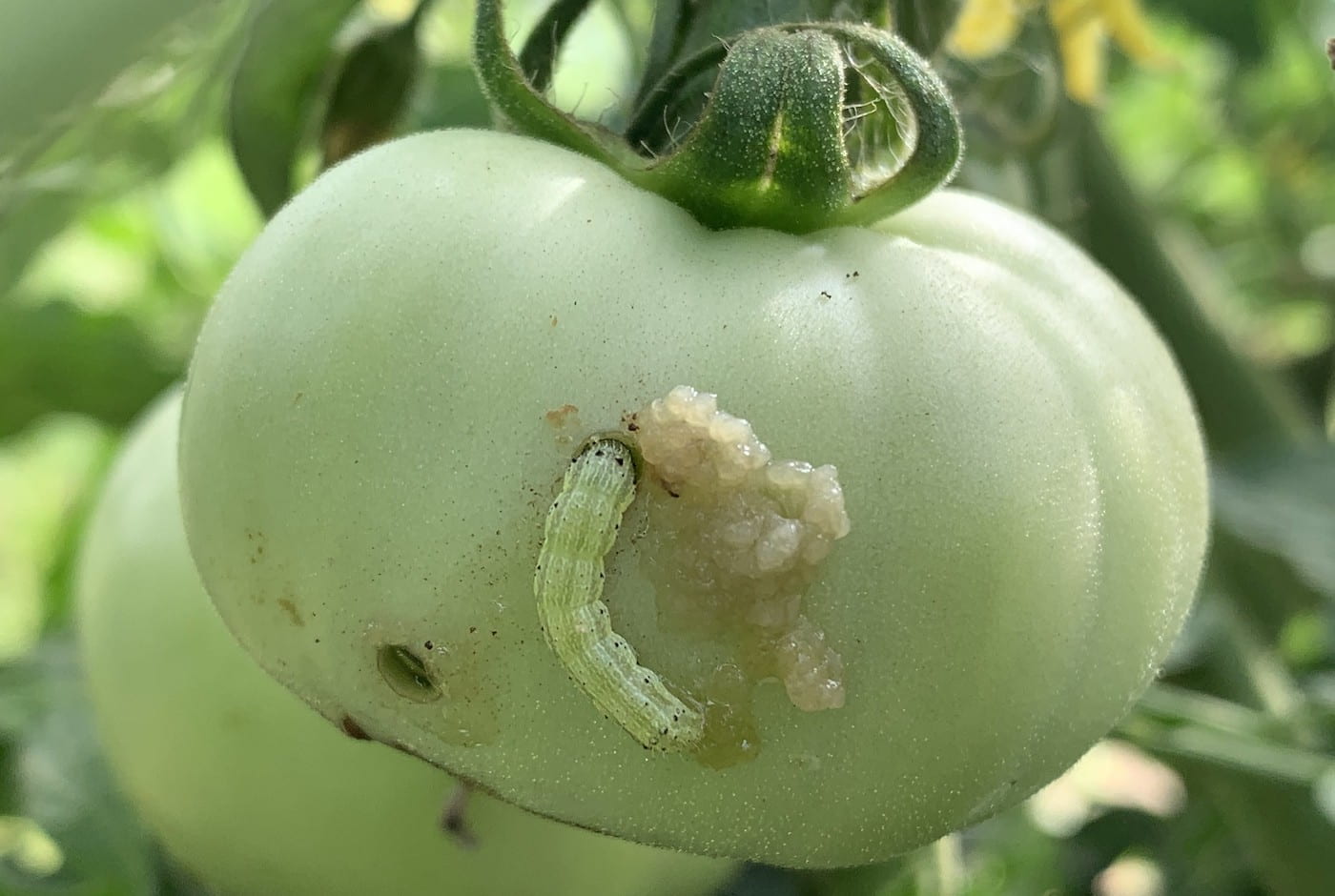What is the single most hard thing about growing a tomato? It’s growing a tomato.
A tomato plant takes up to more than a month to give well-ripened fruit tomatoes.
Apart from the whole tomato craving, have you ever thought of growing a tomato plant in Arizona?
Indeed, growing tomatoes in Arizona is difficult as the temperature conditions are pretty high when considering the tomato plant.
A tomato plant usually thrives in a moist, conditional environment to give well-ripened fruits and good taste.
Arizona State is entirely different from the required environment for a tomato plant to grow fully.
But nature gives a chance now and then to provide the required temperature conditions for a tomato plant to grow in.
So lets get started and learn how to grow tomatoes in Arizona!
Overview: Growing Tomatoes in Arizona

It is only possible to plant tomatoes only twice a year in the winter and monsoon seasons, leaving the summer season alone.
Because of the natural heat in Arizona, the summer season becomes hotter and dries up the atmosphere’s humidity.
This is how you can grow tomatoes in Arizona like any other humid region in the world and get a useful batch of well-ripened fruit from the plant.
You can follow the below-mentioned points carefully to achieve the ability to grow tomatoes in Arizona.
The first thing you must keep in the notice is the change in the temperature cycles throughout the day and night in Arizona, and you have to understand the temperature changes in Arizona.
The most suitable temperature for a tomato plant to grow will be 50 degrees Fahrenheit at night and about 90 degrees Fahrenheit during the daytime.
Anything above or below won’t allow the plant to give fruits or grow leaves.
So, to catch the suitable temperatures in Arizona for growing tomatoes, you have to make sure that you are planting the tomato plants at the right time of the year.
The most suitable times will be from mid-February to April and mid-September to December.
The tomato plants can grow more effectively as the seasons are mostly winter and monsoon seasons at the time of that year.
The temperatures tend to be lower than the average overheating temperature during the summer season.
After deciding on the perfect time of the year to grow the tomatoes, you have to grow tomatoes in Arizona.
Essential Tips For Growing Tomatoes in Arizona

1. Sow the Seeds Before the Destined Time of The Year
The tomato plant takes up to two weeks to sprout from the soil, and if you have seeded the seeds at the start of mid-February or in mid-September, the plant will enter the season where the temperatures are unfavorable.
So, if the plant experiences a slight increase in the surrounding temperature, the plant will not grow effectively, resulting in gradually decreasing the plant’s decimation.
Therefore, for the plant to grow naturally, you must seed the seeds in a container first and let the sprouts occur by taking necessary care of the plant by placing it indoors.
The plant does not need any sunlight to grow roots under the soil.
You can transplant the baby plant from the pot to the garden grounds or any other suitable place right after the temperature tends to assist the growth of the plant outdoors.
2. Maintaining the Perfect Soil Texture
As Arizona is a hot place, the soil also appears to be dried up and lacks natural moist conditions.
For a tomato plant to grow in Arizona, you should provide moist soil to grow fully and give fruits.
You can solve this problem by adding extra soil to the garden grounds, which is suitable for the plants’ better growth.
The soil can be available in farm fields and such nurseries, which goes by red soil.
The red soil is rich in minerals like iron and other minerals that the tomato plant requires to grow in any habitat.
The soil has to be scattered all around where you want to plant the tomato plant, and the soil needs to be at least one to two feet deep.
Doing so will allow the tomato plant to grow spread the roots quickly, and absorb moisture very effectively.
You also need to prepare the soil before planting tomatoes, and frozen soil is also not perfect for the growth of tomatoes on the surface.
The soil needs to be free of any weeds and other invasive plants to increase and give a batch of fruits by the time summer enters.
3. Adopt the Usage of Sprinklers
Even if you have taken enough care to plant the tomato plant in a suitable environment, it is unsure how the temperature will be on any day.
So, if the temperature rises more rapidly, you must be prepared for alternative methods to keep the temperature in the required range.
You may be thinking about watering the plants more rapidly, but the watering only makes the soil moist and only helps the roots underground.
But the leaves and the tomatoes that are just growing will severely affect the outcome.
To save the plant from overheating, you must install sprinklers to maintain the leaves and the fruits’ moist conditions.
By spraying the water, the heat can be beheld for a specific time, allowing the fruit to continue. It is a normal and natural process of growth.
4. Never Let the Temperature Down
As you take care of the temperature from not rising above the required range, you also must make sure that the temperature never drops down.
Arizona is famous for dry days with hot temperatures, but the nights can sometimes get a bit cold by dropping temperatures below 30 degrees Fahrenheit.
The required range of temperature is to be 55 degrees at nighttime.
If you fail to deliver the right temperature window, you may certainly not be able to taste a delicious fruit from your tomato plant.
Artificial thermal equipment is used to keep the temperatures within the destined range throughout all night.
These devices use thermal heating coils powered by electrical energy and are very handy to keep the plant warm and cozy at needed times.
These devices are only to be used at night times as they can only keep the temperature from dropping down but can’t stop it from hiking.
So, this device is not suitable to use in the daytime.
5. Natural Fertilizers
So many fertilizers and chemical compounds are used to increase tomatoes’ growth more rapidly and with an attractive red color.
It is better not to use chemical fertilizers for growing tomatoes because they might not be suitable for everyone.
The tomato farmers must use these kinds of fertilizers to meet the supply-demand of the population.
As you grow the tomatoes, you do not need any growth agents for your tomato plant to give more fruits.
Instead of chemical fertilizers, you can use natural fertilizers for growing tomatoes.
The natural fertilizer is compost of nitrogenous wastes from domestic cattle. They show excellent results in the harvest.
6. Look Out for The Pests
There is a big chance of pest infection on your tomato plants at any time. You have to take care to get rid of the infectious Insects that damage the plant.
You can find these pests and Insects by having a regular observation of the leaves of the plant.
The larva of these Insects will feed upon by consuming the leaves.
If there are any insects present on the plant, then the leaves will appear with holes in them, resulting from the insect larvae consuming the leaves.
It would help if you got rid of such problems in the starting stages only to avoid further infection.
You may also need to cut off certain plant parts if the infections seem more serious. Use pesticides to remove any possible infections on the plant.
7. Necessary Care
Providing suitable conditions are not enough for the perfect growth of the tomato plant. Some physical parameters affect the growth of the tomato plant.
The tomato plant’s stems are the most delicate structure and tend to break off with slight pressure.
It would help if you ensured that no kids or pets would damage the plant while playing.
A fence or protective poles have to be arranged around the group of plants for protection.
The fence does not have to be closed, and you can use an iron net fence for the purpose.
8. The Color Does not Matter
Like the usual tomatoes you see on supermarket shelves, your tomatoes might be different from them in color and size.
Those tomatoes are grown to be attractive for the buyers and grown using chemical fertilizers.
And compared to them, your garden-grown tomatoes will be more delicious in taste and are healthy with the natural fertilizers used.
The tomato fruit color depends on the seeds that are extracted from it. The color will surely not matter in the taste.
9. Know When to Harvest
You must ensure you harvest the fruits in time to avoid the tomatoes going full ripe.
The tomato plant starts growing the fruits after a period of 4 weeks to 5 weeks. After that period, the fruits take a week to 2 weeks to get well-ripened.
And also, if you make any delay in harvesting the fruits in time.
The heat of the summer season will make the fruits go dry and make them unfit for consumption.
10. Do Not Remove the Plant After the Harvest
After a harvest, the farmers will remove the tomato plants and plant new seeds for a new batch of harvest again.
They do that because plant losses are the ability to give more fruits after a harvest and only give a small harvest.
You do not need to take the whole plant away. The plant can still give enough fruits for you in sufficient amounts.
You can also take the seeds from the same plant’s fruit and sow those seeds for the same plant’s offspring to grow.
Pest Management in Arizona for Tomato Plants

Growing tomatoes in Arizona presents unique challenges, not least of which is managing pests that thrive in the state’s warm climate.
Effective pest management is crucial for ensuring the health and productivity of your tomato plants.
Below are common pests found in Arizona and organic methods to combat them:
1. Common Pests in Arizona
- Tomato Hornworms: These large, green caterpillars can rapidly defoliate a tomato plant. They are often hard to spot due to their green color that blends with the foliage.
- Aphids: Small and soft-bodied, aphids can be green, yellow, brown, red, or black. They suck sap from the plant, causing leaves to curl and stunt growth.
- Spider Mites: These tiny pests, often red or brown, can cause tomato leaves to turn yellow and dry out.
- Whiteflies: These small, white-winged insects congregate on the undersides of leaves, feeding on plant juices and causing yellowing or death of leaves.
- Cutworms: These caterpillars feed at night, cutting off young plants at the soil surface.
2. Organic Pest Management Strategies
- Regular Inspection: Regularly check your plants for signs of pests. Early detection is key to effective control.
- Handpicking: For larger pests like tomato hornworms, handpicking is an effective method. Check your plants in the early morning or late evening when these pests are most active.
- Water Spray: A strong jet of water can help dislodge aphids and spider mites from your plants.
- Organic Insecticidal Soap: A solution of insecticidal soap can be sprayed on plants to control aphids, whiteflies, and spider mites. It’s safe for the plant and the environment.
- Neem Oil: This natural oil works as an insecticide, miticide, and fungicide. It can help control various pests and diseases without harming beneficial insects.
- Diatomaceous Earth: Sprinkle this around the base of your plants. It’s effective against cutworms and other crawling insects.
- Companion Planting: Planting marigolds, basil, or calendula near your tomatoes can help deter pests through their natural fragrances.
- Beneficial Insects: Encourage beneficial insects like ladybugs, lacewings, and predatory mites that prey on harmful pests.
- Row Covers: Use floating row covers to protect young plants from pests, removing them once the plants start to flower.
- Healthy Soil: Keeping your soil healthy and well-nourished can boost your plants’ natural defenses against pests.
By implementing these organic pest management strategies, you can successfully grow healthy and productive tomato plants in Arizona, even amidst its challenging climate.
Remember, the key to pest management is vigilance and early intervention, ensuring that minor issues don’t escalate into major infestations.
Conclusion
Successfully growing tomatoes in Arizona’s unique climate is achievable with careful planning and specific gardening techniques.
Key factors such as selecting the right planting times, preparing and maintaining moisture-rich soil, and using efficient watering systems like sprinklers are crucial.
Additionally, it’s essential to manage the challenging temperature fluctuations, utilizing thermal heating devices at night and ensuring plants are protected during the intense daytime heat.
Organic pest management, including regular inspections and natural remedies like neem oil or beneficial insects, plays a vital role in maintaining healthy plants.
Remember, the color and size of your home-grown tomatoes may vary, but they will likely be more flavorful and nutritious than store-bought varieties.
With these tailored strategies, you can enjoy the rewarding experience of cultivating your own delicious tomatoes.
Start today!

